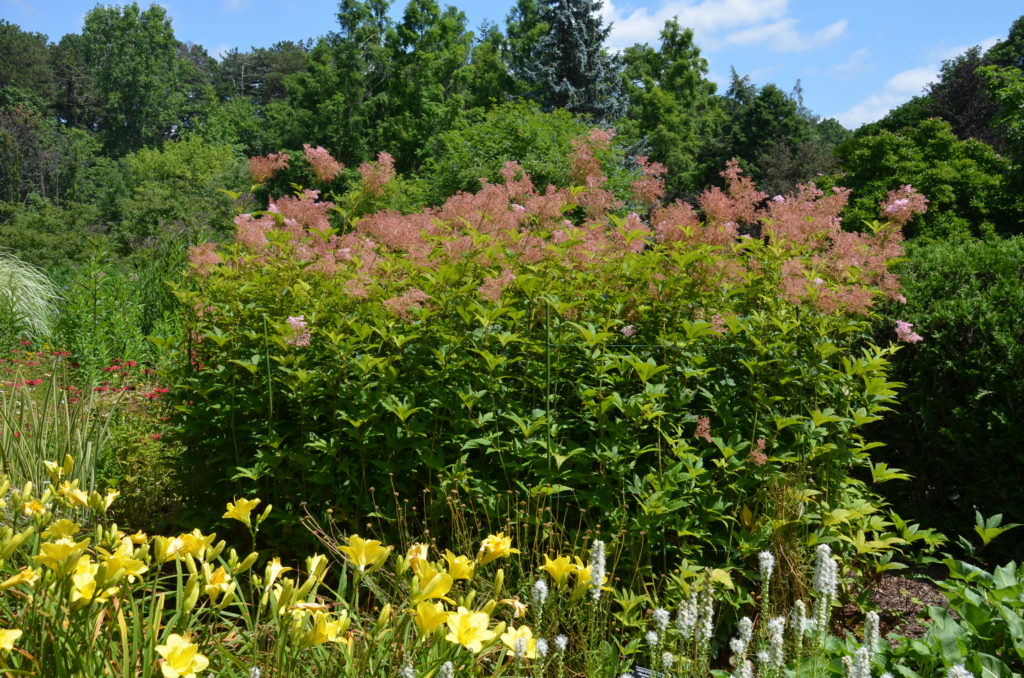Q

“Tall and pretty spectacular” very much describes Queen of the prairie (Filipendula rubra) (USDA hardiness zones 3 to 8). Twelve species comprise this genus of U.S. perennials (USDA hardiness zones 3-8). Best known species are meadowsweet (F. ulmaria).dropwort (F. vulgaris), both native to Europe, and queen-of-the-forest (F. occidentalis) and queen-of-the-prairie (F. rubra), both native to North America.
Queen of the prairie is a popular favorite, native from Pennsylvania to Georgia west and north to Iowa and Missouri. This long-lived beauty will dominate its garden spot for many years. Unlike most Filipendula spp. which bear white flowers, F. rubra flaunts wonderful pink flowers,
Queen of the prairie is valued for both its bold foliage and flowers. This clump-forming perennial grows 6-8 feet tall. Many 6-9 inch wide panicles (corymbs) tiny, fragrant, pale pink flowers fill the tops in early to mid summer. Bright green, deeply cut, pinnately compound leaves comprise 7-9 lance-shaped large leaflets, each leaflet 7-9 lobed. Leaves are fragrant.
In Zones 3 to 7, filipendulas grow naturally in mostly full sun sites. In the South (Zones 7b – 8), plants are best lightly shaded from mid-afternoon sun. Plant in moist acidic soils, but they also will prosper on poorly drained, calcareous sites. More soil moisture means taller plants.
Few serious disease or insect problems trouble filipendulas when plants are not crowded and roots are kept relatively moist. Leaf spots, powdery mildew, rust are occasional problems. Though quite tall, this sturdy stemmed perennial usually does not ask for staking unless grown in moderate shade.
Filipendulas are tall plants for large gardens. Plant three or more for an
early summer spectacular floral show.
Landscape use: borders (rear), cottage gardens, rain gardens, wet meadows or in moist ground along streams or ponds.
F. rubra varieties include:
‘Albicans’ (‘Magnificum Album’) has white flowers and grows shorter.
‘Venusta’ (‘Magnifica’) has deep pink flowers.
Related species:
Siberian Meadowsweet (F. palmata) – 4 feet tall with medium-green palmate leaves with fuzzy white undersides. Flowers range from pale to deep pink and are borne inclusters on erect stems. Zones 3 to 9. Russia, China, Japan.
Japanese Meadowsweet (F. purpurea) – 4 feet tall with medium-green toothed, lobed leaves and erect purple-red flower stems with deep reddish pink blooms. Zones 4 to 9. Japan.
Queen of the Meadow, Meadowsweet (F. ulmaria) – 2 to 3 feet tall with toothed, lobed medium-green leaves and erect, branched flower stems with dense clusters of creamy white blooms.

 Posted in
Posted in 
